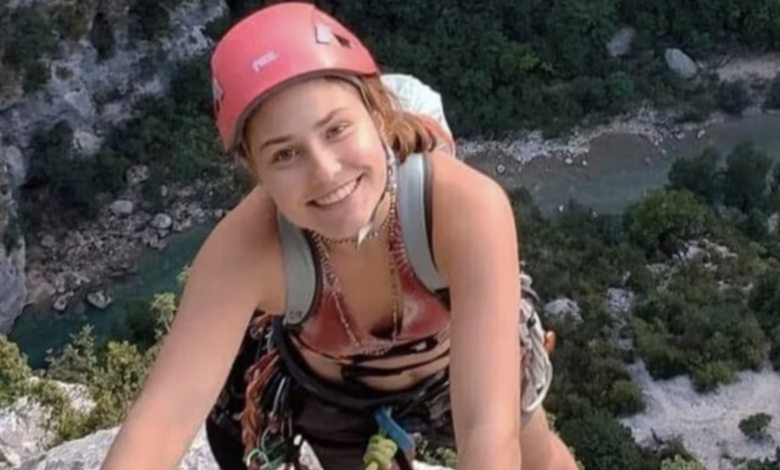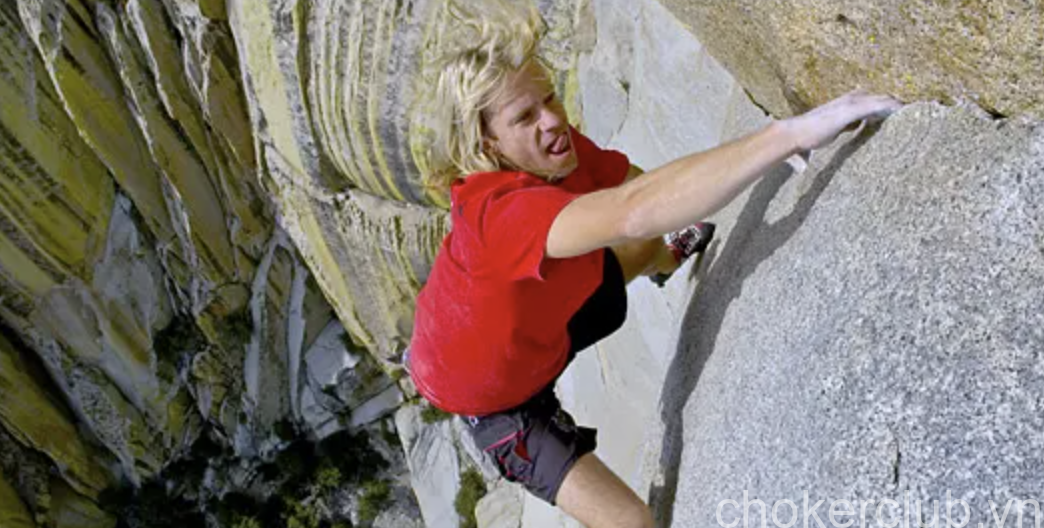Rock Climbing Accident: Understanding the Hazards and Precautions

Rock climbing is an exhilarating yet inherently risky sport that brings adventure seekers face to face with the majesty of nature. However, it is important to be aware of the potential dangers that come with rock climbing, including the risk of rock climbing accidents. At Chokerclub, we understand the need for comprehensive knowledge and safety precautions when engaging in this thrilling activity. In this article, we will explore the hazards associated with rock climbing accidents, such as falls, head injuries, inadequate emergency access, and anchor failures. By understanding these risks and taking appropriate precautions, climbers can better ensure their safety and enjoy the sport to its fullest.

| Key Takeaways |
|---|
| Falls are a common cause of rock climbing accidents. |
| Head injuries, broken bones, and internal organ damage are potential injuries from falls. |
| Rock climbers should be aware of the risks associated with remote locations and limited emergency access. |
| Anchors should be checked carefully to prevent deadly accidents caused by anchor failure. |
| Both novice and experienced climbers should take careful precautions to minimize risks. |
The Hazards of Rock Climbing Accidents
Falls: A Common Cause of Rock Climbing Accidents
Falls are one of the most common causes of rock climbing accidents. Climbers can experience slips, loss of grip, or equipment failures that result in falls. Even a relatively short fall of 10-20 feet can lead to severe injuries or even death. It is crucial for climbers to exercise caution and use proper safety equipment to minimize the risk of falls.
Some of the risks associated with falls include:
- Head injuries
- Broken bones
- Spine and neck trauma
- Internal organ damage
Inadequate Emergency Access: The Risks of Remote Locations
Many rock climbing areas are situated in remote locations, far from immediate medical assistance. In the event of an accident, this lack of accessibility can pose significant challenges for rescue and treatment. Climbers should be aware that emergency response may be delayed, increasing the risks and potential complications associated with rock climbing accidents.
Key points regarding inadequate emergency access:
| Remote locations | Limited emergency services | Delay in rescue and medical assistance |
Anchor Failures: A Deadly Risk and the Importance of Checking Anchors
Anchors play a crucial role in rock climbing safety. Poor placement by climbers or failure of anchors themselves can result in devastating accidents. It is vital for climbers to carefully inspect and test anchors to ensure their strength and stability. Regular maintenance and thorough checks can help prevent accidents and unnecessary risks.

Falls: A Common Cause of Rock Climbing Accidents
Falls are a prevalent cause of rock climbing accidents, posing a significant risk to climbers’ safety. The following factors contribute to falls:
Slipping off the Rock Face
Loss of grip or a momentary lapse in concentration can result in climbers slipping off the rock face, leading to a dangerous fall.
Losing Grip
Even experienced climbers can encounter situations where they lose their grip on the rock, potentially resulting in an accidental fall.
Equipment Failures
Climbing equipment such as harnesses, ropes, and carabiners play a crucial role in ensuring safety. However, failures in this gear can lead to falls and increase the risks involved.
To minimize the chances of falls, climbers should:
Always Use Reliable and Well-Maintained Equipment
Regularly inspect climbing gear for any signs of wear and tear, and replace or repair it as necessary.
Practice Proper Climbing Techniques
Taking lessons from qualified instructors can help climbers develop skills and techniques that reduce the risk of falling.
Stay Focused and Mindful of Footing
Awareness of foot placement and maintaining concentration on the climb can prevent slips and potential falls.
Head Injuries and Other Risks Associated with Falls
Falls during rock climbing can result in severe head injuries, which are one of the most common and concerning outcomes. Head injuries can range from mild concussions to more severe traumatic brain injuries (TBIs). The impact of a fall can cause the climber’s head to hit the rock face, leading to immediate injury and potential long-term complications.
Risk Factors for Head Injuries:
- Slipping off the rock face due to loss of grip or inadequate foot placement.
- Failure of climbing equipment, such as a harness or helmet.
- Poor judgment and decision making, such as attempting a challenging route without appropriate skills or experience.
Other Risks Associated with Falls:
In addition to head injuries, falls during rock climbing can lead to various other types of injuries including:
| Injuries | Description |
|---|---|
| Broken Bones | Falls can result in fractures or breaks in bones, commonly in the arms, legs, and wrists. |
| Spine and Neck Trauma | The impact from a fall can cause significant damage to the spine and neck, potentially leading to paralysis or long-term disabilities. |
| Internal Organ Damage | Severe falls can result in internal injuries, such as damage to the liver, spleen, or other vital organs. |

Inadequate Emergency Access: The Risks of Remote Locations
Rock climbing often takes place in remote and isolated locations, far from immediate access to emergency services. This poses significant risks in the event of an accident or injury. Without prompt medical attention, the consequences can be severe. It is crucial for climbers to be aware of these risks and take appropriate precautions to mitigate them.
Limited Availability of Emergency Services
In remote climbing areas, the availability of emergency services may be limited due to the challenging terrain or long distances to the nearest facilities. This means that even minor injuries can become more serious without timely medical intervention. Climbers should be prepared to provide basic first aid and know how to communicate distress signals effectively.
The Importance of Having a Plan
Before embarking on a rock climbing adventure in a remote location, it is essential to have a comprehensive emergency plan in place. This includes informing trusted individuals about your climbing itinerary, expected return time, and the contact details of local authorities or rescue services.
Survival and Self-Rescue Skills
In case of an accident, climbers should possess basic survival and self-rescue skills to sustain themselves until help arrives. This may include knowledge of essential wilderness first aid techniques, understanding how to protect oneself from harsh weather conditions, and being able to navigate safely back to civilization, if possible.
| Risks of Inadequate Emergency Access: | Precautions: |
|---|---|
| Risk of delayed medical attention | Carry a well-equipped first aid kit and learn basic first aid techniques. |
| Difficulty in communication and rescue | Carry emergency communication devices and know how to use distress signals. |
| Increased severity of injuries | Be prepared for self-rescue and possess survival skills. |

Anchor Failures: A Deadly Risk and the Importance of Checking Anchors
Anchor failures represent a significant risk in rock climbing, often resulting in serious injury or even death. It is crucial for climbers to understand the importance of checking anchors properly before relying on them for support.
The Causes of Anchor Failures
Several factors can contribute to anchor failures, including poor placement by the climber, rock instability, or equipment failure. Even seemingly solid anchors can be compromised, so it is essential to exercise caution and double-check their integrity.
The Consequences of Anchor Failures
An anchor failure can lead to catastrophic accidents, causing climbers to fall from great heights or become trapped on the rock face. The consequences can include severe injuries, such as broken bones, spinal trauma, or head injuries.
The Importance of Checking Anchors
Properly inspecting anchors is a critical safety measure that climbers should never overlook. Conducting a thorough assessment includes examining the strength and stability of the anchor points, ensuring solid placements, and using appropriate equipment like carabiners and slings.
To ensure a safe climbing experience, climbers must prioritize anchor checks and adopt a vigilant approach to their own safety, reducing the risk of accidents caused by anchor failures.

Conclusion
Rock climbing accidents can result in serious injury or even death, highlighting the importance of understanding and mitigating the associated risks. Falls, head injuries, inadequate emergency access, and anchor failures are some of the key hazards to be aware of. By taking careful precautions, such as double-checking anchors, using appropriate safety equipment, and staying vigilant during climbs, both novice and experienced climbers can minimize the chances of accidents. However, it is crucial to remember that rock climbing is an inherently dangerous sport, and risk can never be completely eliminated. By staying informed and adopting a safety-first mindset, climbers can enjoy this thrilling sport while prioritizing their well-being.







